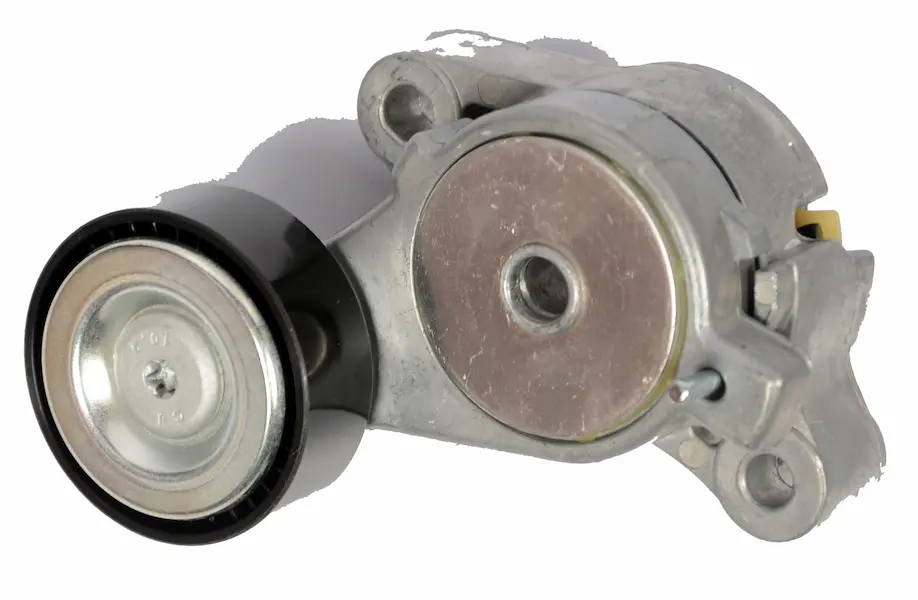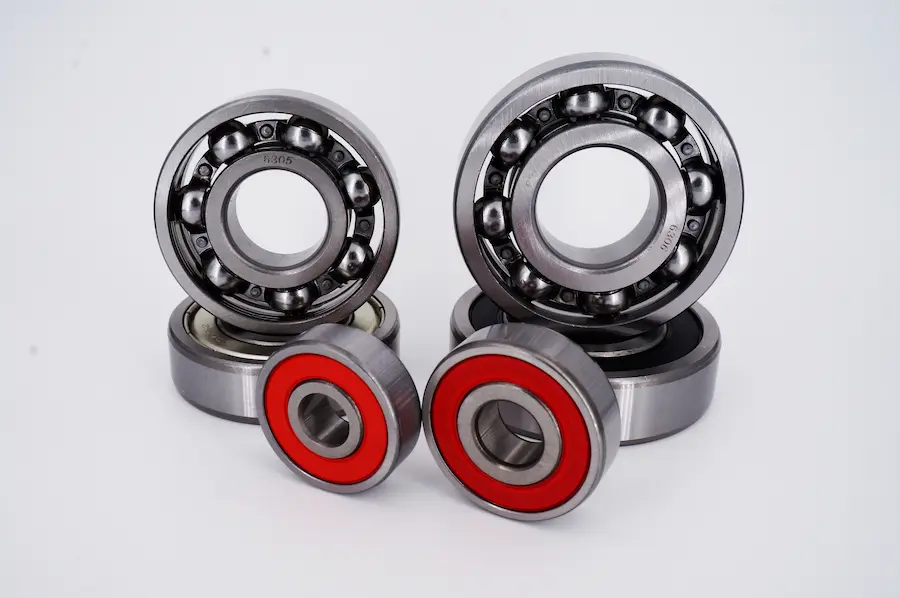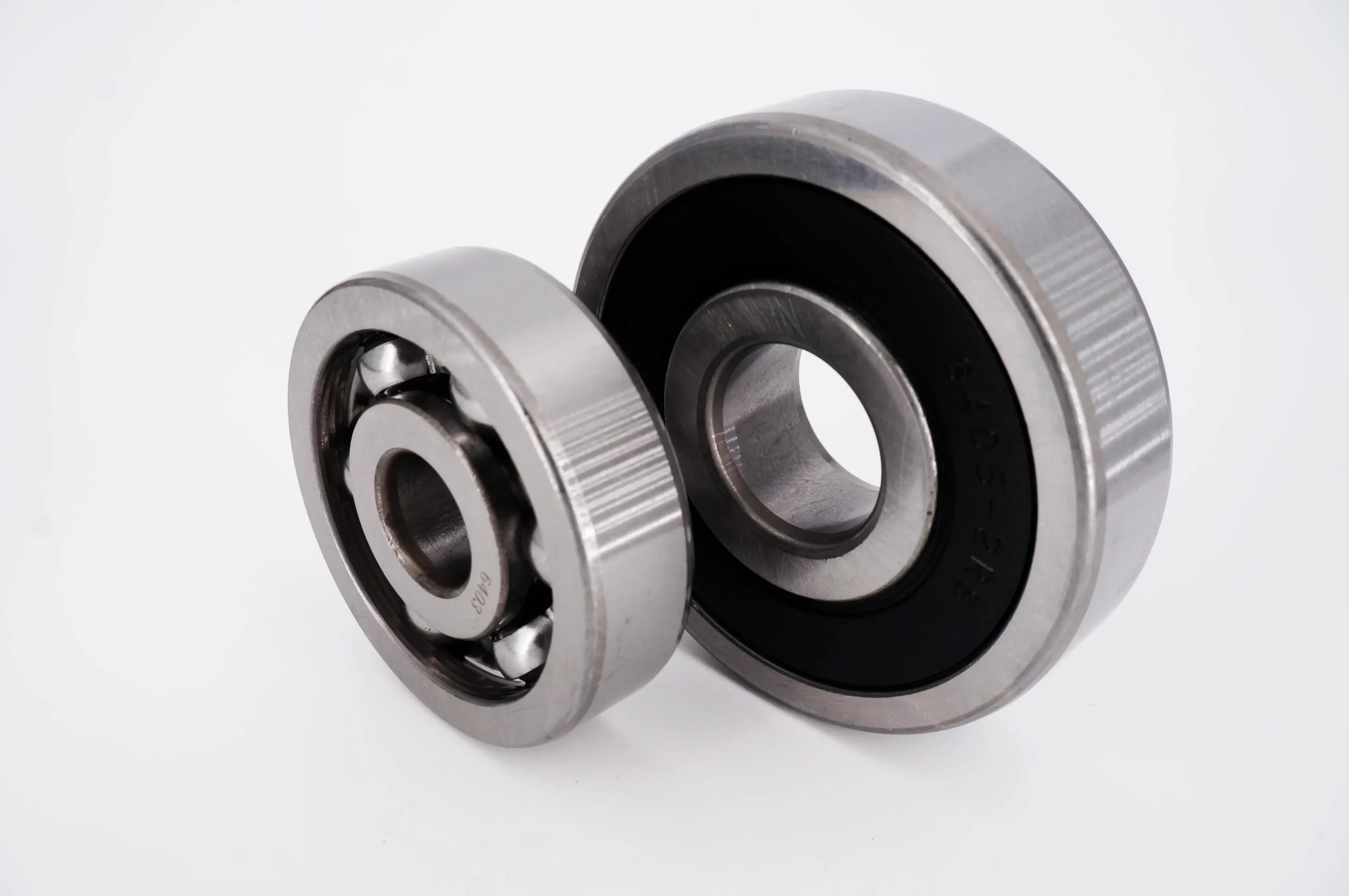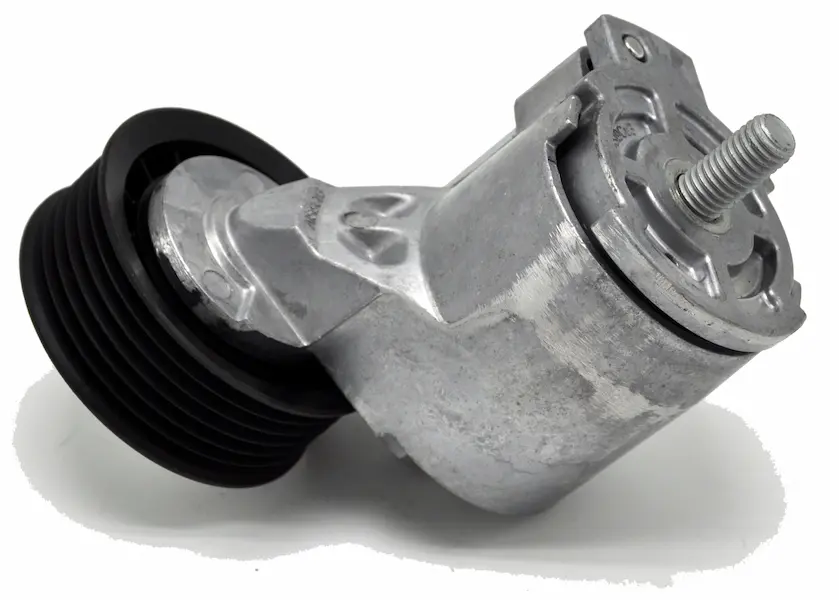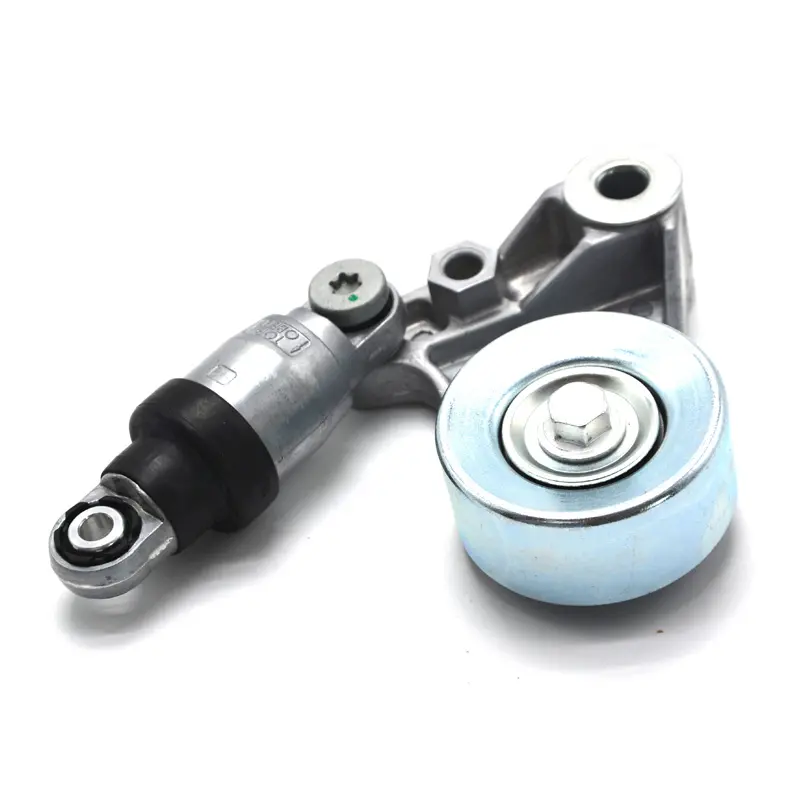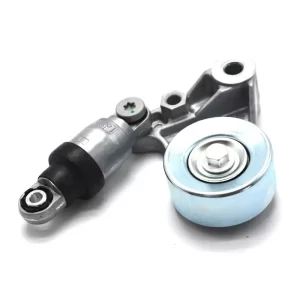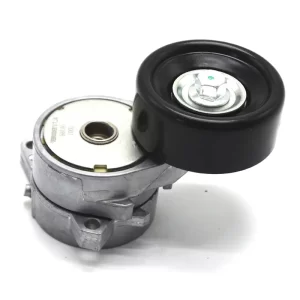Οι τροχαλίες τεντωτήρα και αδρανείας μας έχουν σχεδιαστεί για να ανταποκρίνονται στα υψηλά πρότυπα των οχημάτων Volkswagen (VW) και Audi, εξασφαλίζοντας βέλτιστη απόδοση και αντοχή.
Αυτά τα εξαρτήματα είναι κατασκευασμένα με ακρίβεια ώστε να πληρούν ή να υπερβαίνουν τις προδιαγραφές του ΟΕΜ, παρέχοντας αξιόπιστη λειτουργία και ανθεκτικότητα.
Έχουμε δεσμευτεί να παράγουμε υψηλής ποιότητας τροχαλίες τεντωτήρα και τροχαλίες αδρανείας που παρέχουν αξιοπιστία και απόδοση για τα οχήματα VW και Audi.
Κατασκευασμένα με έμφαση στην ανθεκτικότητα και την ακρίβεια, αυτά τα εξαρτήματα εξασφαλίζουν σταθερή τάση και ευθυγράμμιση των ιμάντων του κινητήρα, ενισχύοντας την αποδοτικότητα και τη μακροζωία.
Εξερευνήστε πώς η δέσμευσή μας για ποιοτική κατασκευή. Καλώς ήρθατε να επικοινωνήσετε μαζί μας, ανεξάρτητα από το αν έχετε οποιεσδήποτε απαιτήσεις.
Τα οχήματα Volkswagen (VW) και Audi είναι γνωστά για τη μηχανική τους αρτιότητα, την αξιοπιστία και τις επιδόσεις τους.
Για την ομαλή λειτουργία αυτών των οχημάτων απαιτούνται εξαρτήματα υψηλής ποιότητας, όπως ο τεντωτήρας και οι τροχαλίες αδρανείας.
Οι τροχαλίες τεντωτήρα και αδρανείας μας είναι ειδικά σχεδιασμένες για να ανταποκρίνονται στα απαιτητικά πρότυπα της VW και της Audi, παρέχοντας βέλτιστη απόδοση και ανθεκτικότητα.
Ο τεντωτήρας εξασφαλίζει ότι οι ιμάντες κίνησης διατηρούν τη σωστή τάση, αποτρέποντας την ολίσθηση και εξασφαλίζοντας την αποτελεσματική λειτουργία των εξαρτημάτων του κινητήρα, όπως η γεννήτρια, η αντλία νερού και η αντλία υδραυλικού τιμονιού.
Εξοπλισμένος με κάποιο μηχανισμό όπως το ελατήριο, ο τεντωτήρας προσαρμόζεται αυτόματα στις διακυμάνσεις της τάσης του ιμάντα, εξασφαλίζοντας σταθερή απόδοση καθ' όλη τη διάρκεια ζωής του ιμάντα.
Η τροχαλία αδράνειας καθοδηγεί τον ιμάντα κίνησης γύρω από τα εξαρτήματα του κινητήρα, διασφαλίζοντας ότι ακολουθεί τη σωστή διαδρομή και διατηρεί τη σωστή ευθυγράμμιση.
Διατηρώντας τη σωστή ευθυγράμμιση και τάση του ιμάντα, η τροχαλία αδρανοποίησης εξασφαλίζει την αποτελεσματική λειτουργία του συστήματος μετάδοσης κίνησης με ιμάντα.
Τόσο ο τεντωτήρας όσο και η τροχαλία αδράνειας παράγονται με ακριβείς προδιαγραφές για να ταιριάζουν απόλυτα στους κινητήρες VW και Audi.
Οι τροχαλίες τεντωτήρα και αδρανείας που διαθέτουμε εξασφαλίζουν την ομαλή και αποδοτική λειτουργία των κινητήρων VW και Audi, διατηρώντας τις επιδόσεις για τις οποίες είναι γνωστές αυτές οι μάρκες.
Είμαστε αφοσιωμένοι στην παραγωγή τροχαλιών τεντωτήρα και τροχαλιών αδρανείας που ξεπερνούν τις προσδοκίες των ιδιοκτητών VW και Audi.
Η επένδυσή μας σε καλούπια υψηλής ποιότητας και στην κατασκευή ακριβείας διασφαλίζει ότι κάθε τροχαλία που παράγουμε είναι της υψηλότερης ποιότητας, παρέχοντας αξιοπιστία και απόδοση που μπορείτε να εμπιστεύεστε.
Συμβουλές για τη συντήρηση των τεντωτήρων
- Τακτικές επιθεωρήσεις:
- Οπτικός έλεγχος: Ελέγχετε περιοδικά τον εντατήρα για σημάδια φθοράς, όπως ρωγμές, διάβρωση ή ζημιά.
- Κατάσταση ζώνης: Ελέγξτε τον ιμάντα σερπεντίνης ή τον ιμάντα χρονισμού για φθορά, ρωγμές, τζάμια ή φθορά, καθώς αυτά μπορεί να επηρεάσουν την απόδοση του εντατήρα.
- Ακούστε για ασυνήθιστους θορύβους:
- Τσιμουρητό ή κροτάλισμα: Οι ασυνήθιστοι θόρυβοι μπορεί να υποδεικνύουν βλάβη του εντατήρα ή κακή ευθυγράμμιση του ιμάντα. Αντιμετωπίστε αμέσως αυτούς τους θορύβους για να αποτρέψετε περαιτέρω ζημιές.
- Ελέγξτε την ευθυγράμμιση του τεντωτήρα:
- Σωστή ευθυγράμμιση: Βεβαιωθείτε ότι ο τεντωτήρας είναι σωστά ευθυγραμμισμένος με τον ιμάντα. Η λανθασμένη ευθυγράμμιση μπορεί να προκαλέσει υπερβολική φθορά στον ιμάντα και σε άλλα εξαρτήματα.
- Δοκιμή τάσης ιμάντα:
- Σωστή ένταση: Χρησιμοποιήστε ένα μετρητή τάσης ιμάντα για να ελέγξετε ότι η τάση του ιμάντα βρίσκεται εντός του εύρους που ορίζει ο κατασκευαστής. Ρυθμίστε εάν είναι απαραίτητο.
- Αυτόματοι τεντωτήρες: Βεβαιωθείτε ότι οι αυτόματοι τεντωτήρες λειτουργούν σωστά και παρέχουν τη σωστή τάση.
- Λίπανση:
- Συστάσεις του κατασκευαστή: Ακολουθήστε τις οδηγίες του κατασκευαστή σχετικά με τη λίπανση. Ορισμένοι τεντωτήρες είναι προλιπαινόμενοι και σφραγισμένοι και δεν απαιτούν πρόσθετη λίπανση.
- Αντικαταστήστε όταν χρειάζεται:
- Χρονικά διαστήματα σέρβις: Αντικαταστήστε τον τεντωτήρα σύμφωνα με τα συνιστώμενα από τον κατασκευαστή του οχήματος διαστήματα σέρβις ή εάν διαπιστωθούν σημάδια βλάβης.
- Ταυτόχρονη αντικατάσταση: Εξετάστε το ενδεχόμενο αντικατάστασης του ιμάντα και άλλων σχετικών εξαρτημάτων (όπως η τροχαλία αδρανείας) κατά την αντικατάσταση του τεντωτήρα για να εξασφαλίσετε βέλτιστη απόδοση.
- Καθαρίστε την περιοχή:
- Χωρίς σκουπίδια: Διατηρείτε τον εντατήρα και τη γύρω περιοχή απαλλαγμένη από ρύπους, υπολείμματα και λάδια για να αποφύγετε τη μόλυνση και να εξασφαλίσετε την ομαλή λειτουργία.
- Παρακολούθηση της απόδοσης του κινητήρα:
- Συμπεριφορά κινητήρα: Δώστε προσοχή στην απόδοση του κινητήρα. Συμπτώματα όπως η ολίσθηση των ιμάντων, η υπερθέρμανση ή η απώλεια ισχύος μπορεί να υποδεικνύουν προβλήματα με τον εντατήρα.
- Χρησιμοποιήστε ποιοτικά ανταλλακτικά:
- ΟΕΜ ανταλλακτικά: Χρησιμοποιήστε εξαρτήματα του αρχικού κατασκευαστή εξοπλισμού (OEM) ή υψηλής ποιότητας ανταλλακτικά της αγοράς για να διασφαλίσετε τη συμβατότητα και την αξιοπιστία.
- Επαγγελματική επιθεώρηση:
- Έλεγχος μηχανικού: Ζητήστε από έναν επαγγελματία μηχανικό να επιθεωρήσει τον εντατήρα και το σύστημα ιμάντα κατά τη διάρκεια τακτικών επισκέψεων σέρβις για να εντοπίσετε τυχόν προβλήματα νωρίς.
Ακολουθώντας αυτές τις συμβουλές συντήρησης, μπορείτε να παρατείνετε τη διάρκεια ζωής του τεντωτήρα, να εξασφαλίσετε την αξιόπιστη λειτουργία του συστήματος μετάδοσης κίνησης του ιμάντα του οχήματός σας και να αποτρέψετε απροσδόκητες βλάβες.

